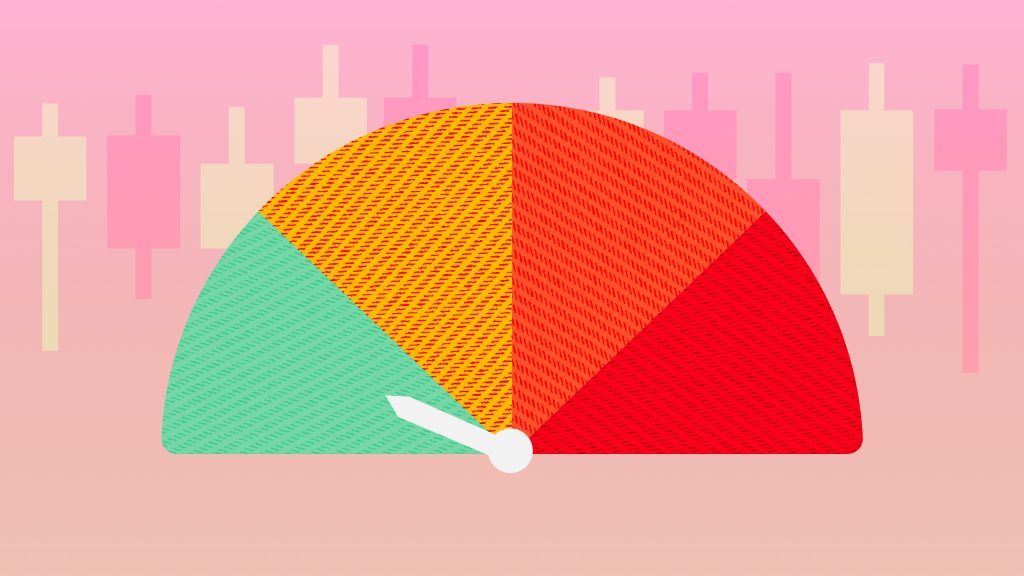
What is Copy Trading?
28 July 2023
65 views
The world of trading can be intimidating, especially for those who are just starting. Between the charts, the market jargon, and the constant need to stay updated, it’s no wonder many people shy away from investing. But what if you could skip the steep learning curve and start trading like a pro right from day one? That’s where Copy Trading comes in.
Copy Trading is a relatively new concept in the financial world, but it’s quickly gaining popularity among both beginner and experienced traders. The idea is simple: you copy the trades of more experienced investors. By doing so, you’re essentially piggybacking on their expertise, allowing you to benefit from their knowledge without needing to spend years learning the ropes yourself.
What Is Copy Trading?
At its core, Copy Trading is exactly what it sounds like: you copy the trades of another investor. This is usually done through a platform or a broker that offers Copy Trading as a service. Once you find a trader whose strategies and results you like, you can choose to automatically replicate their trades in your own account.
It’s important to note that you’re not just copying individual trades; you’re essentially mirroring the entire portfolio of the trader you’re following. If they buy a stock, you buy the same stock. If they sell, you sell. The goal is to match their performance as closely as possible.
One of the main attractions of Copy Trading is that it’s incredibly user-friendly. You don’t need to have any prior experience in trading or understand complex financial markets. All you need to do is find a trader you trust and let the platform handle the rest.

How Does Copy Trading Work?
Copy Trading typically works through specialized platforms that connect traders. Here’s a step-by-step breakdown of how the process works:
- Choose a Platform: The first step is to find a platform that offers Copy Trading. Some popular options include eToro, ZuluTrade, and MetaTrader. Each platform has its own set of features, fees, and trader pools, so it’s important to do your research and choose one that fits your needs.
- Find a Trader to Copy: Once you’ve chosen a platform, you’ll need to find a trader whose performance you want to replicate. Most platforms allow you to browse through a list of traders, complete with detailed statistics on their past performance, risk level, and trading style.
- Set Your Parameters: After selecting a trader to copy, you’ll need to decide how much of your portfolio you want to allocate to this strategy. Some platforms allow you to set specific limits, such as maximum drawdown or stop-loss levels, to manage your risk.
- Start Copying: Once everything is set up, your account will automatically start copying the trades of the selected trader. From here on out, your performance will closely mirror that of the trader you’re copying.
- Monitor and Adjust: Copy Trading isn’t entirely hands-off. You’ll still need to monitor your account and make adjustments as needed. For example, if the trader you’re copying starts underperforming, you might want to stop copying them and choose someone else.
Benefits of Copy Trading
So, why should you consider Copy Trading? Here are some of the main benefits:
- Accessibility: You don’t need to be an expert to start trading. Copy Trading makes it easy for beginners to enter the market without needing extensive knowledge.
- Time-Saving: Trading can be time-consuming, especially if you’re constantly monitoring the markets. Copy Trading allows you to outsource this task to someone else.
- Diversification: By copying multiple traders, you can diversify your portfolio and reduce your risk.
- Learning Opportunity: Copy Trading can also be a great way to learn about trading. By following the moves of experienced traders, you can gain insights into their strategies and market thinking.
Risks of Copy Trading
Of course, no investment strategy is without risk, and Copy Trading is no exception. Here are some potential downsides to keep in mind:
- Dependence on Others: When you copy someone else’s trades, you’re essentially putting your financial future in their hands. If they make a bad call, you’ll suffer the same losses.
- Limited Control: Copy Trading means giving up some control over your investments. While you can usually set certain parameters, you’re still largely at the mercy of the trader you’re copying.
- Market Risks: Just like any other trading strategy, Copy Trading is subject to market risks. If the market takes a downturn, the trader you’re copying might not be able to avoid losses.
- Platform Risks: Finally, there’s the risk of the platform itself. Not all Copy Trading platforms are created equal, and some might have hidden fees, technical issues, or other problems that could affect your performance.
Choosing the Right Traders to Copy
One of the most crucial aspects of successful Copy Trading is selecting the right traders to follow. While it might be tempting to just pick the top performer on the platform, there’s more to consider than just past returns. Here’s how to approach this decision:
- Evaluate Performance Metrics: Look beyond the headline numbers like total returns. Pay attention to metrics such as drawdown (the largest drop from a peak to a trough), consistency of returns, and the time period over which the returns were generated. A trader who has been consistently profitable over a longer period is generally more reliable than one who had a sudden burst of success.
- Understand Their Strategy: Different traders use different strategies, and it’s important to find one that aligns with your risk tolerance and investment goals. For example, some traders may focus on short-term, high-risk trades, while others may take a more conservative, long-term approach. Make sure you’re comfortable with the strategy they’re using.
- Risk Management Practices: A good trader will have solid risk management practices in place. Look for traders who don’t over-leverage their positions and who set stop losses to limit potential losses. High-risk traders might have impressive returns, but they can also lead to significant losses if things go wrong.
- Communication and Transparency: Some platforms allow traders to communicate with their followers or provide insights into their thought process. Traders who are transparent about their strategy and willing to share their reasoning are often more trustworthy.
- Check for Diversification: It’s wise to follow a diverse group of traders rather than putting all your eggs in one basket. By copying traders with different styles and strategies, you can spread out your risk and reduce the impact of any single trader underperforming.
Managing Risks in Copy Trading
While Copy Trading can be an effective way to grow your portfolio, it’s essential to approach it with a risk management mindset. Here are some strategies to help you protect your investment:
- Set Realistic Expectations: Copy Trading isn’t a get-rich-quick scheme. It’s important to have realistic expectations about potential returns and to understand that losses are a part of trading. Don’t be swayed by flashy promises or overly aggressive traders.
- Use Risk Management Tools: Most Copy Trading platforms offer tools that allow you to set limits on how much you’re willing to lose. Use these tools to set stop-loss levels, cap your maximum drawdown, or limit the amount you invest in any single trader.
- Diversify Your Investments: As mentioned earlier, diversification is key. Don’t put all your funds into a single trader or strategy. By spreading your investment across multiple traders and asset classes, you can reduce your overall risk.
- Regularly Review Your Portfolio: Even though Copy Trading can be more hands-off than traditional trading, it’s still important to keep an eye on your portfolio. Regularly review the performance of the traders you’re copying and make adjustments as needed. If a trader’s performance starts to decline or they begin taking on more risk than you’re comfortable with, consider stopping the copy or reallocating your funds.
- Stay Informed: While you’re relying on other traders’ expertise, it’s still beneficial to stay informed about the markets and the broader economic environment. This can help you make more informed decisions about which traders to follow and when to make adjustments to your strategy.
Getting Started with Copy Trading
Ready to dive into Copy Trading? Here’s a step-by-step guide to getting started:
- Choose a Platform: The first step is to choose a Copy Trading platform that suits your needs. Consider factors like fees, available traders, user interface, and the platform’s reputation. Take your time to research and compare different options before making a decision.
- Open an Account: Once you’ve chosen a platform, you’ll need to open an account. This usually involves providing some personal information and going through a verification process. Make sure to read the platform’s terms and conditions carefully before signing up.
- Deposit Funds: After your account is set up, you’ll need to deposit funds to start trading. Most platforms offer a variety of payment methods, including bank transfers, credit cards, and sometimes even cryptocurrencies. Be aware of any deposit fees or minimum deposit requirements.
- Explore the Traders: Now comes the fun part—browsing through the available traders to find those you want to copy. Take your time to analyze their performance, strategies, and risk levels. Don’t rush this step; the traders you choose will have a direct impact on your success.
- Start Copying: Once you’ve selected your traders, you can start copying their trades. Set your investment amounts, risk parameters, and any other settings the platform offers. From here, your account will automatically mirror the trades of the selected traders.
- Monitor and Adjust: After you’ve started copying, remember to monitor your account regularly. Keep an eye on the performance of the traders you’re following and be prepared to make adjustments if necessary. Copy Trading is dynamic, and it’s important to stay engaged with your investments.
Legal and Regulatory Considerations
When engaging in Copy Trading, it’s essential to be aware of the legal and regulatory framework that governs this type of investment. While Copy Trading is widely available, the rules and regulations can vary significantly depending on the country and the specific platform you’re using. Here’s what you need to consider:
- Regulation of Platforms: Not all Copy Trading platforms are regulated by financial authorities. It’s crucial to choose a platform that operates under the supervision of a reputable regulatory body, such as the Financial Conduct Authority (FCA) in the UK, the Australian Securities and Investments Commission (ASIC), or the Cyprus Securities and Exchange Commission (CySEC). Regulatory oversight provides a level of protection for your funds and ensures that the platform adheres to certain standards.
- Licensing of Traders: Some regions may require traders to hold specific licenses to offer Copy Trading services. This can provide additional assurance that the traders you’re copying are qualified and operate within the bounds of the law.
- Investor Protection: In some jurisdictions, investors may be protected by schemes such as the Investor Compensation Fund (ICF) in Europe, which can offer compensation in the event that a regulated platform fails. It’s important to check if the platform you’re using offers any such protections.
- Tax Implications: Copy Trading can have tax implications, depending on your country’s laws. Profits from trading may be subject to capital gains tax, and it’s your responsibility to report these gains to your tax authority. It’s advisable to consult with a tax professional to understand your obligations and avoid any surprises.
Psychological Aspects of Copy Trading
Trading isn’t just about numbers and strategies; it’s also deeply psychological. The emotional aspect of trading can have a significant impact on your success, especially in Copy Trading. Here’s how psychology plays a role:
- Avoiding Overconfidence: When you’re copying a successful trader, it’s easy to become overconfident in their abilities. This can lead to increased risk-taking, such as investing more money than you can afford to lose or failing to diversify your portfolio. It’s important to stay grounded and remember that even the best traders can have losing streaks.
- Managing Expectations: Unrealistic expectations can be a major pitfall in Copy Trading. While it’s possible to achieve good returns, expecting consistent, high profits with no losses is not realistic. Market conditions can change rapidly, and even the most experienced traders can’t predict the future with certainty.
- Dealing with Losses: Copy Trading doesn’t eliminate the risk of losses. It’s crucial to be mentally prepared for the possibility of losing money. When losses occur, it’s important to avoid panic and rash decisions, such as stopping a copy after a short-term downturn. Instead, take a step back, review the trader’s overall strategy and performance, and decide whether the loss is part of a normal fluctuation or a sign of deeper issues.
- Patience and Discipline: Successful Copy Trading requires patience and discipline. The best results often come from long-term strategies, which means you need to resist the temptation to constantly tweak your portfolio in response to short-term market movements. Trusting in the process and maintaining a long-term perspective can be key to achieving your investment goals.

Advanced Tips for Maximizing Success in Copy Trading
For those who have a bit more experience or are looking to refine their Copy Trading strategy, here are some advanced tips to consider:
-
Analyze Historical Data: Before committing to copy a trader, take a deep dive into their historical performance data. Look for patterns in their trading behavior, such as how they handle market downturns, their reaction to significant economic events, and their consistency in applying their strategy over time.
-
Start Small and Scale Up: If you’re trying out a new trader, consider starting with a small allocation of your funds. This allows you to test their performance without risking a large portion of your capital. If they perform well, you can gradually increase your investment.
-
Automated Rebalancing: Some advanced platforms offer automated rebalancing features that can help maintain your desired risk level and investment diversification over time. This is particularly useful if you’re copying multiple traders and want to ensure that your portfolio stays aligned with your goals.
-
Regularly Reassess Trader Performance: Markets are dynamic, and so is the performance of traders. Make it a habit to regularly reassess the traders you’re copying. Look at their recent performance, any changes in their strategy, and their reaction to different market conditions. Don’t hesitate to make adjustments if a trader’s performance starts to decline or if their strategy no longer aligns with your risk tolerance.
Conclusion
Copy Trading is a powerful tool that has democratized access to the financial markets, making it easier for individuals to participate in trading without needing extensive knowledge or experience. However, like any investment strategy, it comes with its own set of risks and challenges. By carefully selecting the right traders to follow, managing your risks, and staying informed, you can increase your chances of success.
Whether you’re a complete beginner looking to get your feet wet in the world of trading or an experienced investor seeking a more hands-off approach, Copy Trading offers a unique way to grow your portfolio. With the right approach and mindset, it could be a valuable addition to your investment strategy.
Frequently Asked Questions (FAQ)
- Is Copy Trading suitable for beginners?
Yes, Copy Trading is particularly popular among beginners because it allows them to benefit from the expertise of seasoned traders without needing to have in-depth knowledge of financial markets. However, it’s important to remember that while Copy Trading can reduce the learning curve, it doesn’t eliminate risks. New investors should start with a small amount of capital and choose traders who align with their risk tolerance. - How do I choose the right trader to copy?
Selecting the right trader is crucial for success in Copy Trading. When choosing a trader, consider their historical performance, risk management practices, trading strategy, and consistency. Don’t just focus on high returns—look for traders who have a track record of steady, reliable performance. Additionally, make sure their trading style matches your investment goals and risk tolerance. - What are the risks associated with Copy Trading?
While Copy Trading offers many benefits, it’s not without risks. You are still exposed to market risks, meaning if the markets decline, the trader you’re copying may also incur losses, which will be reflected in your account. There’s also the risk of over-reliance on a single trader, which can lead to significant losses if their strategy fails. It’s essential to diversify by following multiple traders and using risk management tools provided by the platform.




